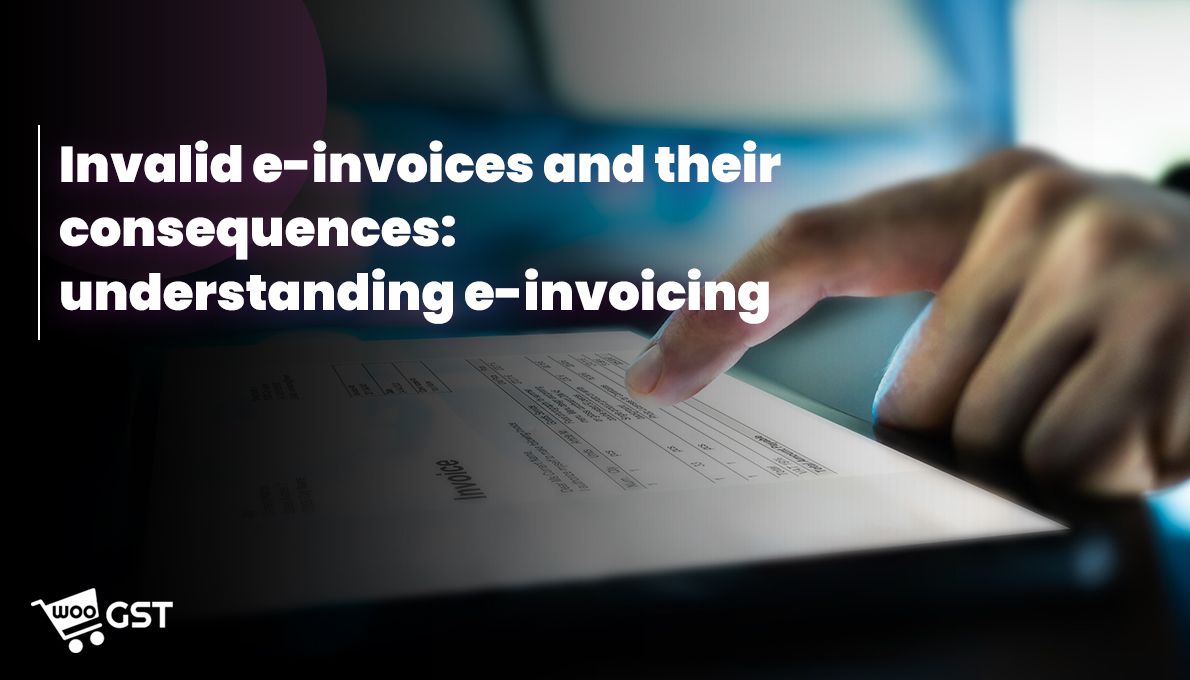
If you are an E-commerce store handler, you must be aware of the e-invoice and its importance in businesses. An e-invoice serves as a transaction record and can be used to calculate taxes. It also serves as a legal document that can be used in disputes. In the past, invoices might be an option for the business owner. But now as per the new GST rule, non-compliance with an e-invoice is no longer an option for the business owner.
If e-invoicing is not generated, it can lead to penalties and other legal consequences. Additionally, it can lead to non-compliance with government rules and regulations, leading to hefty fines and penalties.
Before proceeding towards penalties, let’s understand the difference between the e-invoice and digital invoice.
What is the difference between an e-invoice and a digital invoice?
An e-invoice refers specifically to an invoice that is created, transmitted, and processed in a structured electronic format. It typically follows a standardised format that allows for machine readability and integration with various systems.
A digital invoice encompasses a broader range of invoicing methods that involve digitization. It includes any invoice that is in an electronic format, which can even encompass a scanned copy or image of a paper invoice.
Unlike e-invoices, digital invoices might not adhere to specific structured formats. They can include PDF invoices, scanned documents, or even invoices created in word processing software, which may not have standardized data fields for easy machine interpretation.
WooGST Plugin is the WooCommerce invoice plugin for the e-commerce store owner which automatically calculates GST and generates invoices for your store.
Our Plugin is a customizable and easy-to-use plugin that streamlines your GST calculation process.
If you are looking for the WooCommerce GST invoice Plugin, then you are at the right place.
Download now WooCommerce GST Plugin free version. Additionally, we have the WooGST Pro version with some advanced features and lifetime free updates.
e-invoicing under the GST
Under the Good and Tax regimes, GST taxpayers have a turnover of more than Rs. 500 crores have to be mandated for e-invoicing which was applicable from 1 October 2020. Later this threshold value was lowered to Rs. 20 crores. Now businesses that have a turnover rate of more than Rs. 20 crores have to implement new E-invoicing systems.
Under this system, the taxpayer has to raise the invoice to their internal system followed by submitting it to the Invoice Registration Portal (IRP).
After that, IRP validates invoice information and provides the invoice reference number (IRN) and QR Code which is later sent back to the taxpayer with the signed invoice.
The invoice received by the buyer should contain a QR code. Failing to generate an e-invoice when mandated becomes a default on the taxpayer’s part. Essentially, this omission means that the transaction details haven’t been conveyed to the government as required. Consequently, non-generation of an e-invoice leads to penalties for non-compliance with e-invoicing regulations.
What are the consequences of non-compliance with e-invoicing?
As per the CSGT rule 48 (5), a failure to generate INR in an invoice will be considered a failure to generate an e-invoice.
-
Incorrect Tax Invoice
As per rule 46 (r), it is mandatory to have a QR code on the invoice, which is received after the generation of the INR (invoice reference number). If the invoice doesn’t have a quick response code (Code) and it is not registered on IRP that invoice will be considered as the incorrect invoice which is liable to the penalty of Rs. 25,000.
-
Failure of Invoice Issuance
As rule 48 (5) says if the IRN number is not issued in the invoice. The invoice then will not be valid and any payment made against the invoice will be invalid. The penalty will be imposed for the non-issuance of the IRN number which is Rs. 10,000 or 100% of the tax due, whichever is higher.
-
Detention of Goods
As per section 129 of the CGST Act 2017, if any goods are being transported without a QR code on the invoice or without a valid invoice results in the detention of goods or that vehicle and is liable for the penalty.
-
Input Tax Credit Claim
Section 16 of the CGST Act 2017 specifies that Input Tax Credit (ITC) cannot be claimed without a valid tax invoice. If you have surpassed the e-invoice turnover threshold and aren’t generating an Invoice Reference Number (IRN) for your tax invoices, those invoices aren’t considered valid under the e-invoicing mandate. Consequently, your counterparty won’t be eligible to claim ITC for such invalid invoices. Non-compliance may lead to losing customers.
-
E-way Billing
Without a valid invoice or invoice with an invalid IRN number is considered the invalid e-way billing. As the e-way billing is linked with the e-invoice. E-way billing should not be generated for invalid invoices. If the goods are being transported for this invalid e-way billing it can be considered as unauthorised transport of the goods.
Common mistakes to avoid to comply with e-invoice mandate
- Generating a GST e-invoice under GST involves 132 data fields, where 28 are mandatory and 18 are conditionally mandatory based on factors like shipping and dispatch details. Validating the entered data is crucial before obtaining an IRN (Invoice Reference Number).
- Cancellation of an e-invoice within 24 hours is permissible, except if an active e-way bill corresponds to it. Ensure the e-way bill cancellation precedes the invoice cancellation to avoid issues.
- Specific business scenarios might lead to validation failures. It is essential to discuss and address these conditions before initiating the e-invoicing process.
All Rights Reserved. © 2023